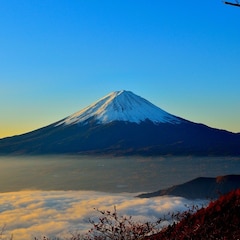Finding Anime in Real Life: 10 Tokyo Locations
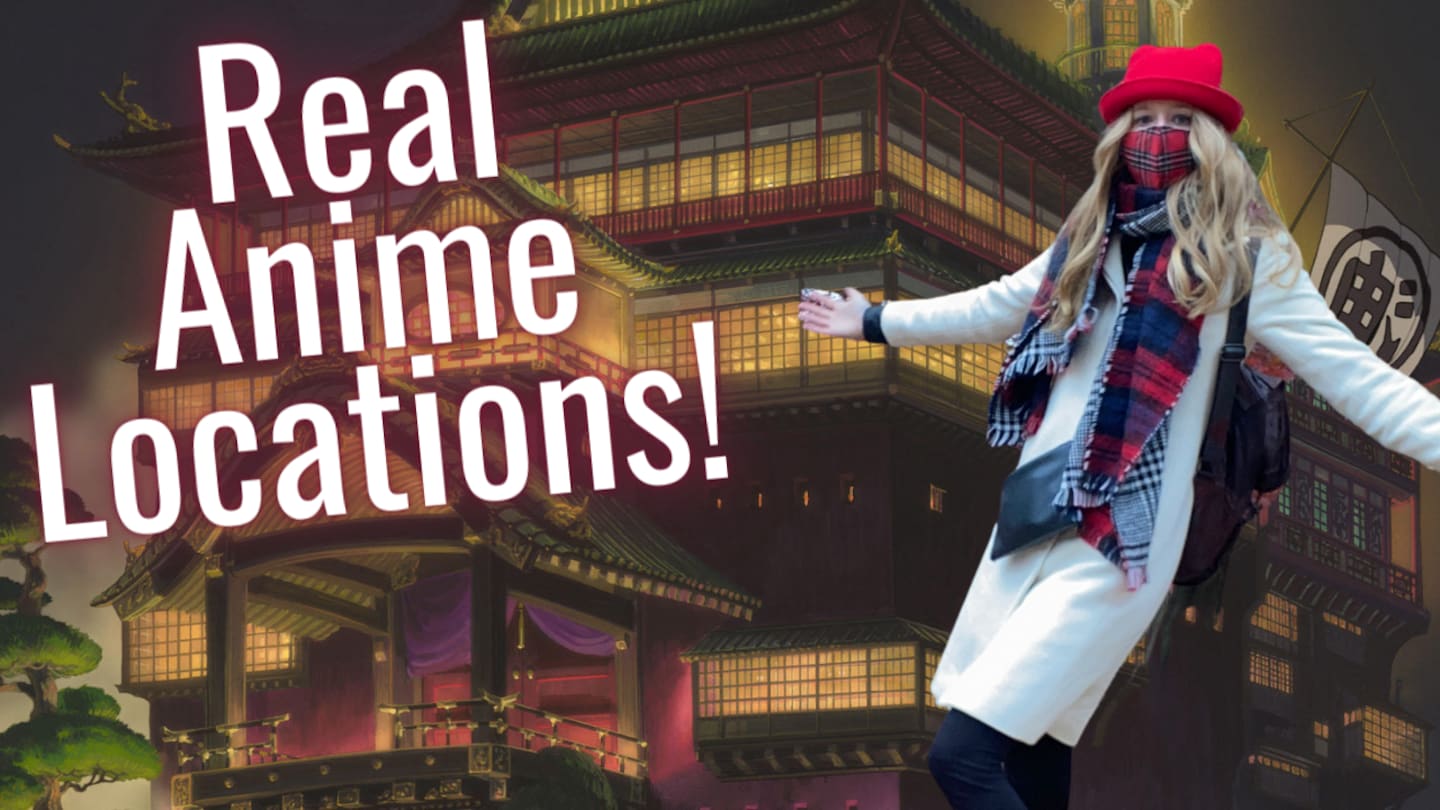
What’s better than watching anime? Living anime! Since I’m lucky enough to live in Tokyo, the setting for a lot of great anime series, Tokyo Survival Channel challenged me to find 10 real-life locations of my favourite anime in just three days. Not only that, I had to recreate the exact shots from the iconic scenes as best as I could.
By Tokyo Survival Channel1. Sarazanmai x Asakusa
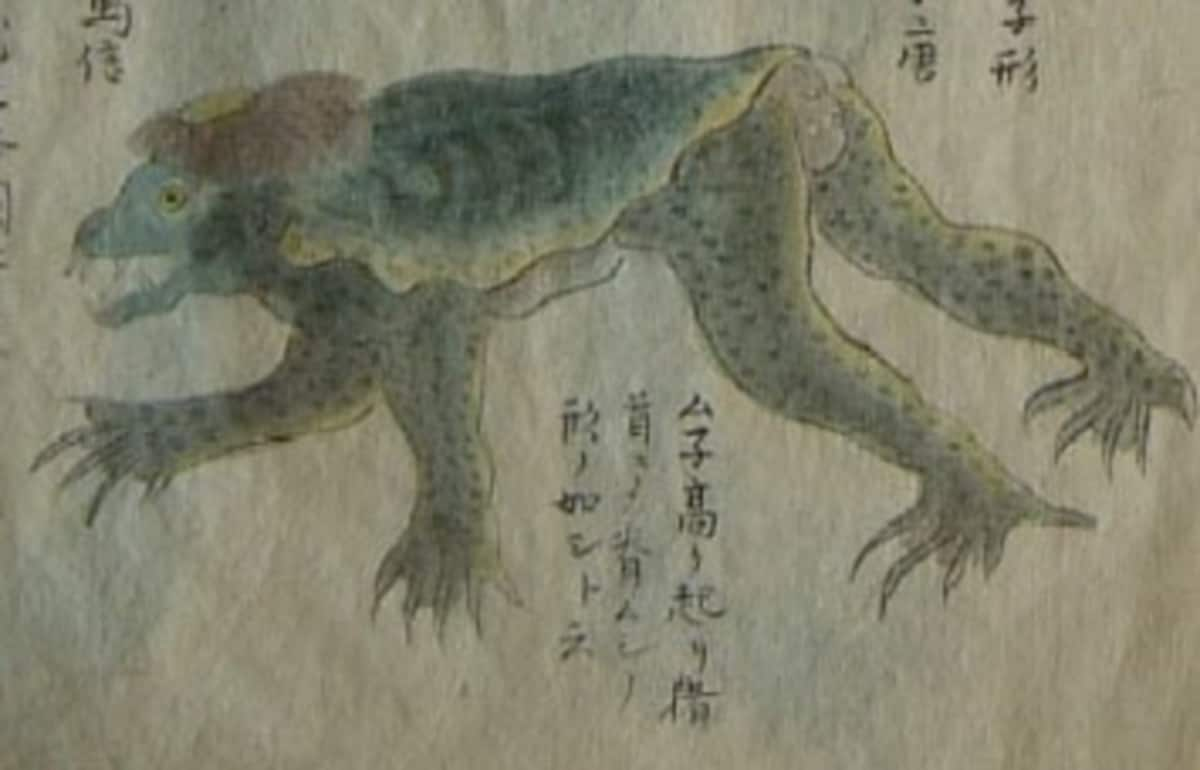
I started off my day by heading to Asakusa, Tokyo’s old district. Asakusa is famous for the tourist landmarks Sensoji Temple and Tokyo Skytree, but there’s one more thing it’s famous for — a green, turtle-shelled monster called the kappa.
Sarazanmai is an anime all about these amphibious imps. Fittingly, the show is set in Asakusa, along the aptly named Kappa-bashi Street, or Kappa Bridge Street. In the first episode, three students visit the street, end up breaking a golden kappa statue and are turned into kappa as punishment. To turn back, the trio must steal the shirikodama (anal soul orbs) from zombies’ butts. Yes, it’s just as strange as it sounds. However, it’s perfectly in keeping with actual kappa lore. This is why I love folklore.
Its likely not a coincidence Ikuhara choose to set Sarazanmai in Asakusa - one of the places in Tokyo with a higher number of old building, and these feature repeatedly in the anime from the very start pic.twitter.com/RKpGRZNnAW
— Meg㋐n @ 🥚 anime + Vlad Love 🧛♀️💞 (@AnimesocMegan) July 26, 2019
The anime features plenty of shots of Asakusa. I took the easy way out, choosing one of Kaminarimon Gate, the main gate of Sensoji Temple. Since the gate is so easy to recognize, I would have no trouble recreating the shot, or so I thought…
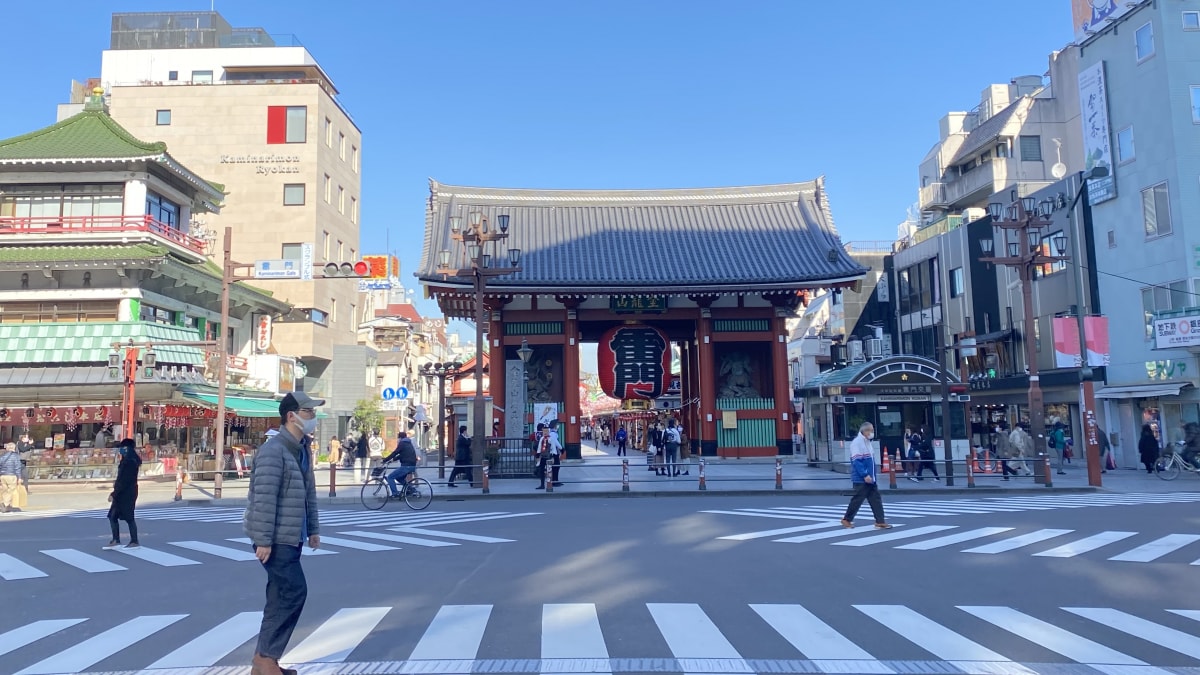
It wasn’t as easy as expected. After a few failed attempts, I realized that to get the photo, the animator must have been standing in the center of the traffic island, just behind the crosswalk. As soon as the pedestrian light turned green, I darted to the island to get my shot. It was thrilling to think that I was standing in the same spot someone from the production team must have stood. The weather was perfectly clear, exactly like the anime, making me feel as if I had been transported inside the show.
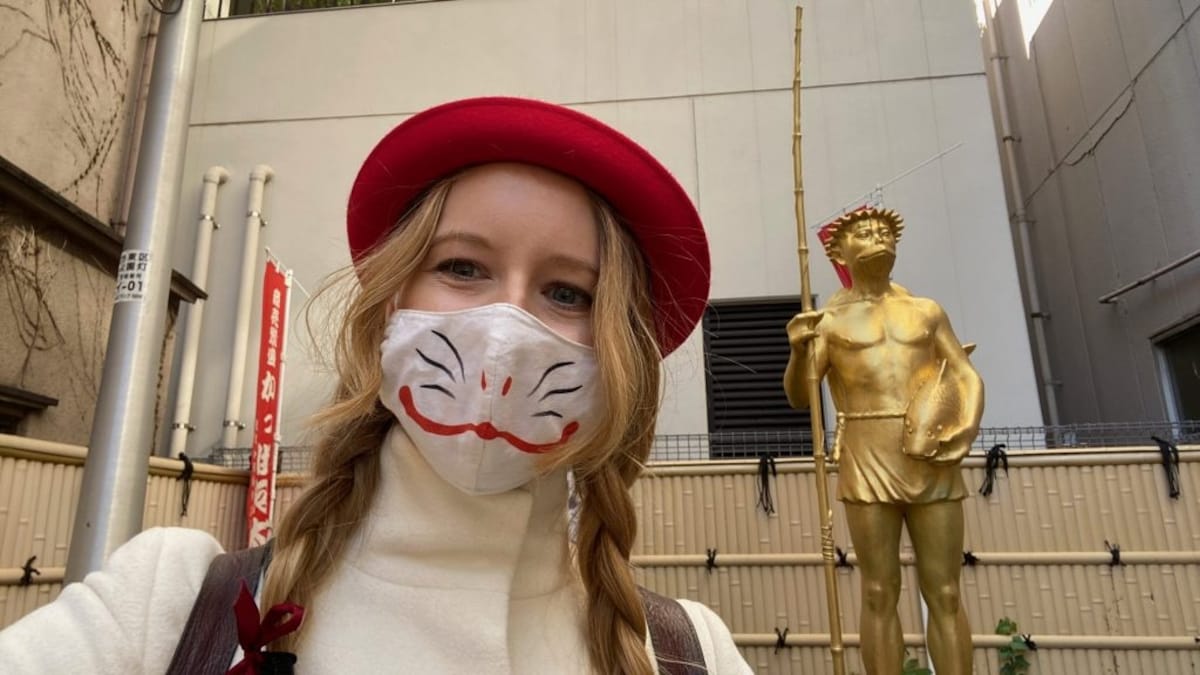
I couldn’t leave Asakusa without stopping by Kappa-bashi, the street that inspired the anime. Kappa-bashi specializes in selling cookware, but it hasn’t forgotten the creature it’s named after. At a temple along the street, you can visit a hand that (supposedly) once belonged to a kappa. And since the anime’s release, many shops have started hanging up Sarazanmai posters on their doors. While visiting the street, I made sure to stop by the fateful golden kappa statue. However, I was especially careful while taking pictures — I didn’t want to turn into a kappa!
2. Jujutsu Kaisen x Harajuku
呪術廻戦毎回 驚きがあるなぁ…みてよ原宿駅新しい方だよ←(えっ) pic.twitter.com/sWUfhwyyME
— Mёi@K (@mei_oz04) October 17, 2020
My next stop was the newly remodelled JR Harajuku Station, which appears in the anime Jujutsu Kaisen that came out in October 2020 — six months after the station’s remodelling. So, Jujutsu Kaisen is one of the first anime to depict the new station!
The show is also one of my favourites, as the mangaka incorporates elements of Japanese folklore into his work. The main antagonist, Ryomen Sukuna, is related to an actual god from Japanese mythology (recorded in the Nihon Shoki), a god said to have two faces, a kind one and an evil one.

The animators recreated the scene almost perfectly, right down to the street signs. The only changes were made on purpose, either for artistic or legal reasons. For example, Sarutahiko Coffee was changed to Harajuku Coffee, and JR was changed to JL to avoid copyright infringement. It was fun to compare real life with the anime, like playing one of those “spot the differences” games.
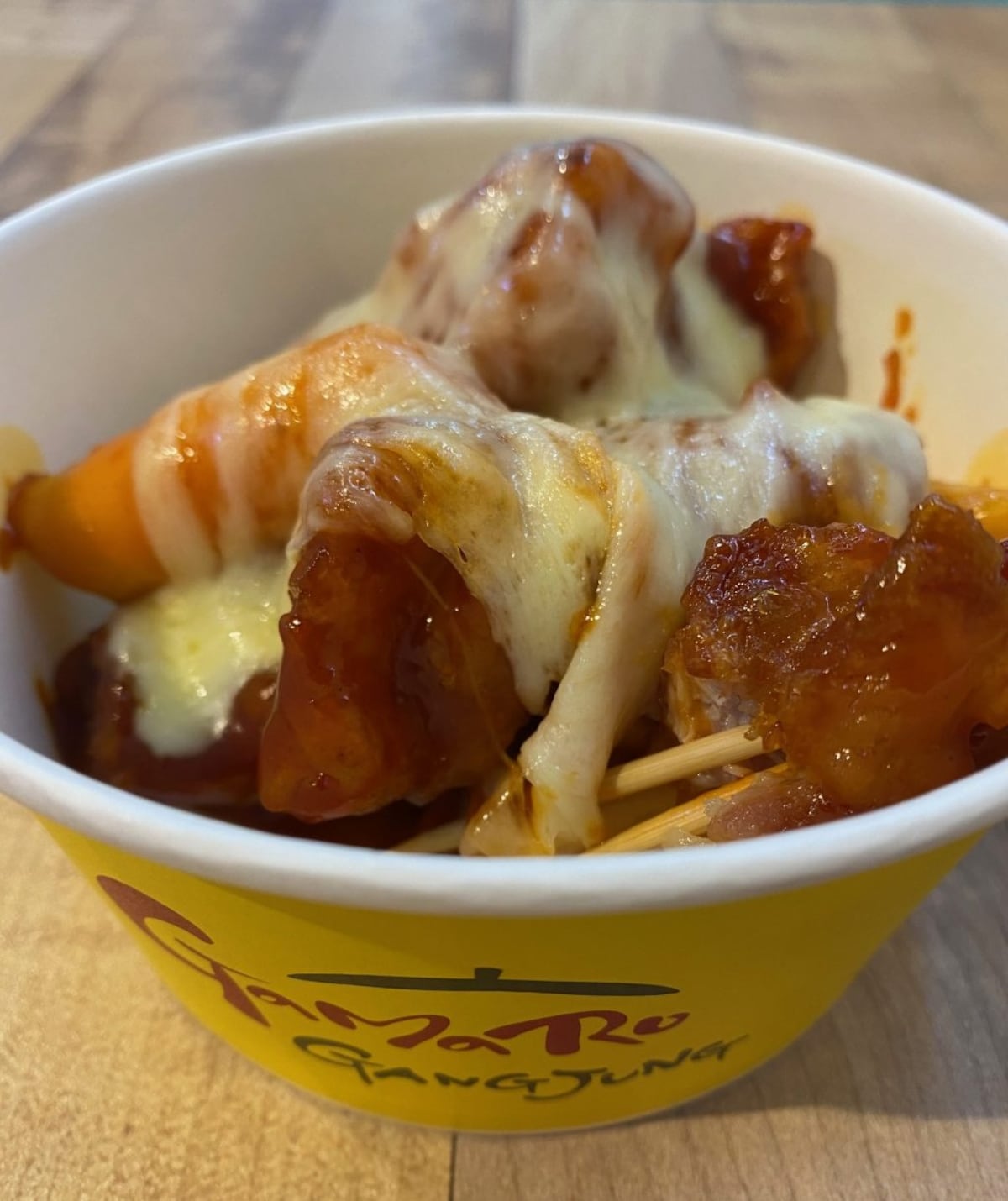
After getting the perfect shot, I grabbed a quick lunch in Harajuku at the recently renovated Korean food court.
While devouring the spicy cheese chicken, I plotted my next course of action, by way of Google Maps. Visiting such touristy areas had me feeling like a tourist in my own city — it was time to visit somewhere a little off the beaten path.
3. GeGeGe no Kitaro x Chofu
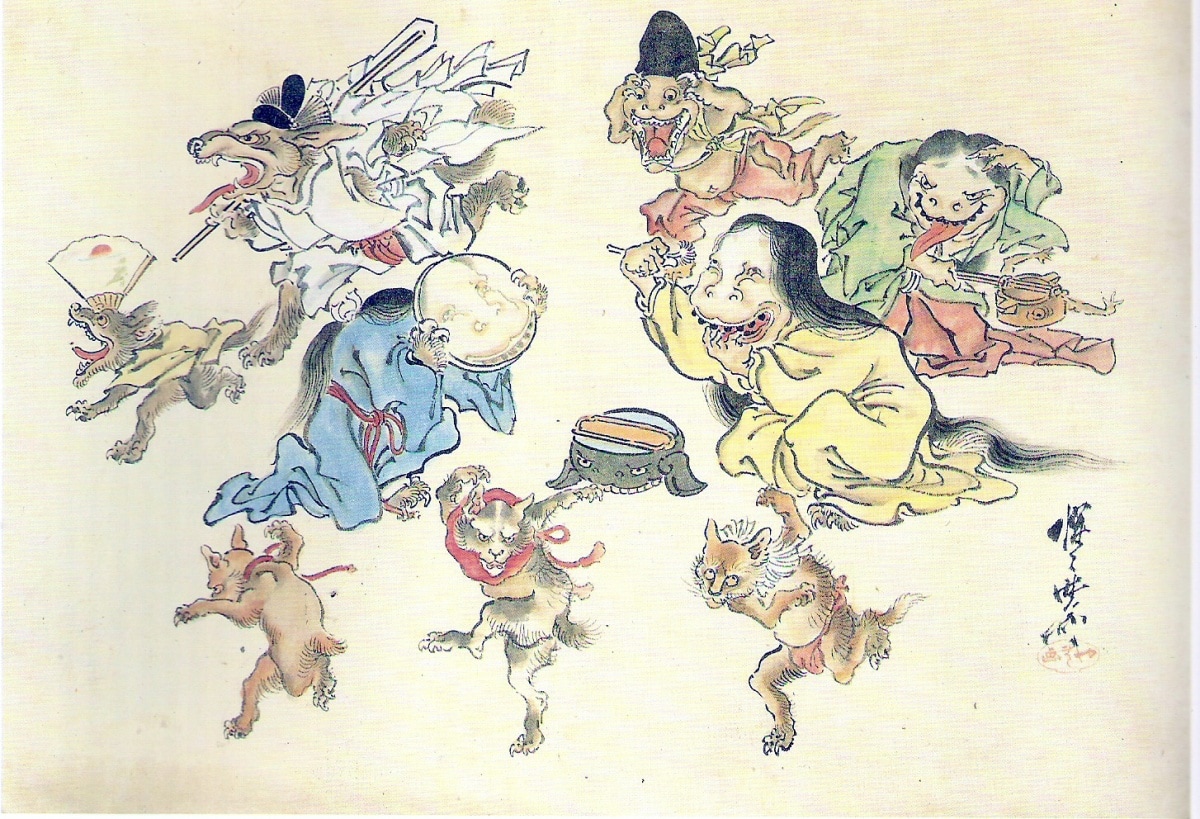
My third destination was somewhere I had been wanting to visit for a long time, a mecca for fans of yokai. In case you’re not familiar with them, yokai are supernatural creatures from Japanese folklore. They include the previously mentioned kappa, but also kitsune (magic foxes), tanuki (magic racoon dogs) and many more!
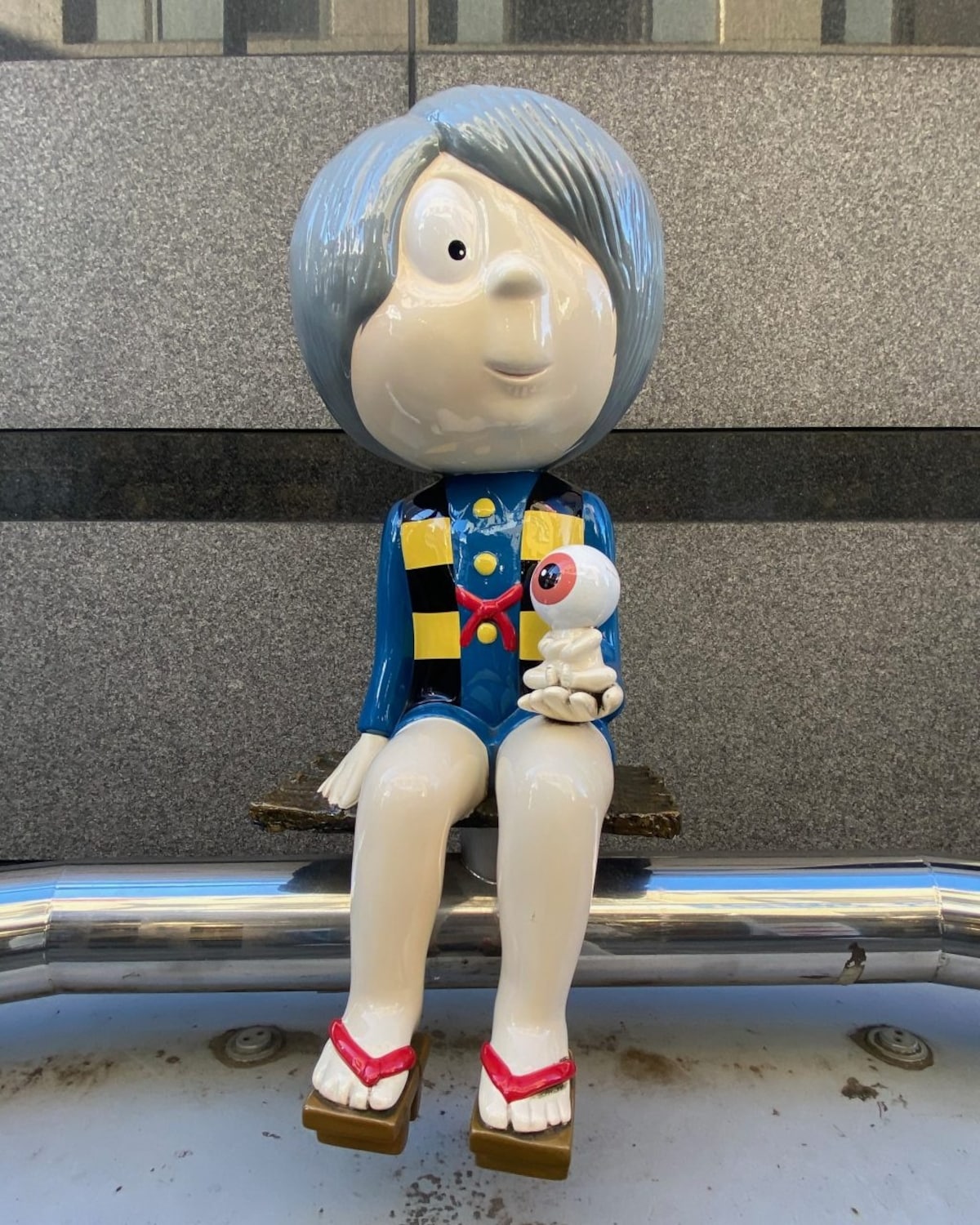
GeGeGe no Kitaro was one of the first manga, and subsequently anime, to feature yokai. The mangaka Shigeru Mizuki is considered a yokai expert himself. Chofu is where both the mangaka and his eponymous character Kitaro lived. However, unless you’re a yokai fan, you’ve probably never even heard of this little town on the outskirts of Tokyo! On the map Chofu looks far from the city center. But when I caught the express train from Shinjuku Station, the trip only took around 20 minutes, making for an easy excursion.
今さらだろうけど
— ネイルゼロプラス Nail ZERO+ (@NailZEROPLUS) May 28, 2018
ゲゲゲの鬼太郎のオープニングは調布にある布田天神です。設定でこの神社の裏に鬼太郎の家があるってことなんです。 pic.twitter.com/8ilBUaBYXv
Kitaro and many other yokai live in the forest behind a shrine. This is Fudaten Shrine in Chofu, and it’s shown in the opening of the most recent anime. While walking to the shrine, I spotted signs of yokai everywhere. The street Tenjin-dori, was lined with sculptures of the yokai characters from GeGeGe no Kitaro, including the neko-musume, ittan-momen and Kitaro himself.
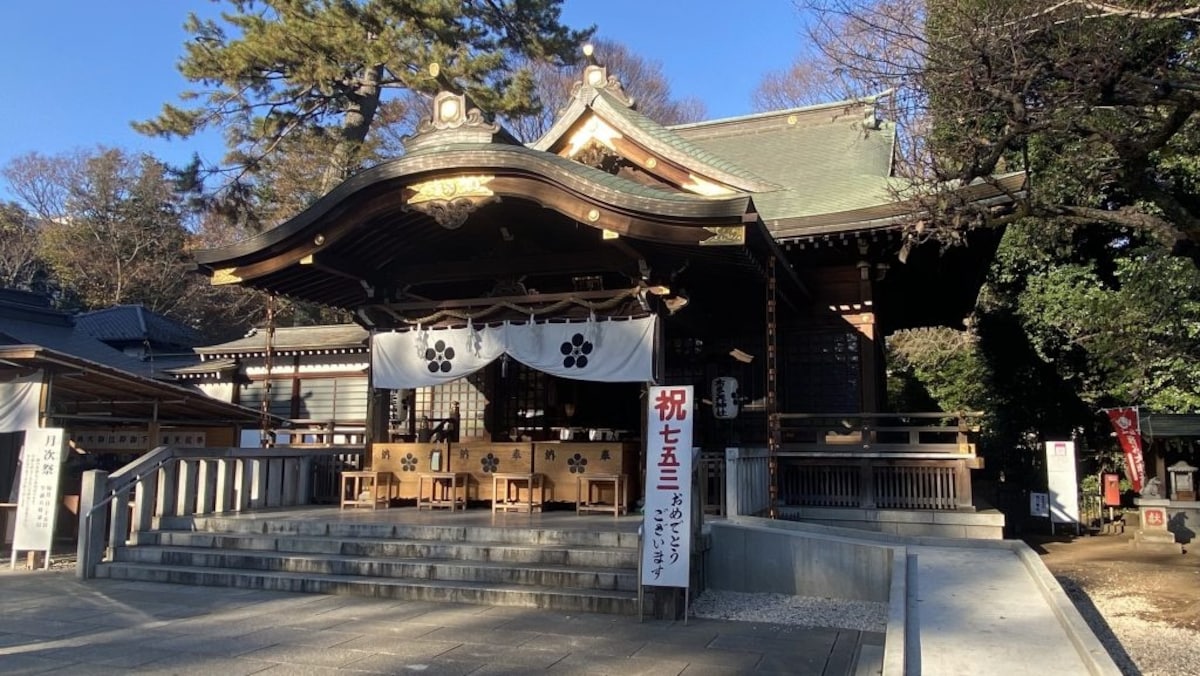
The shrine in the anime and the real thing were not exactly alike, but I could still spot many similarities. Behind this shrine, there was a small forest. I wonder what I would find if I wandered in there?
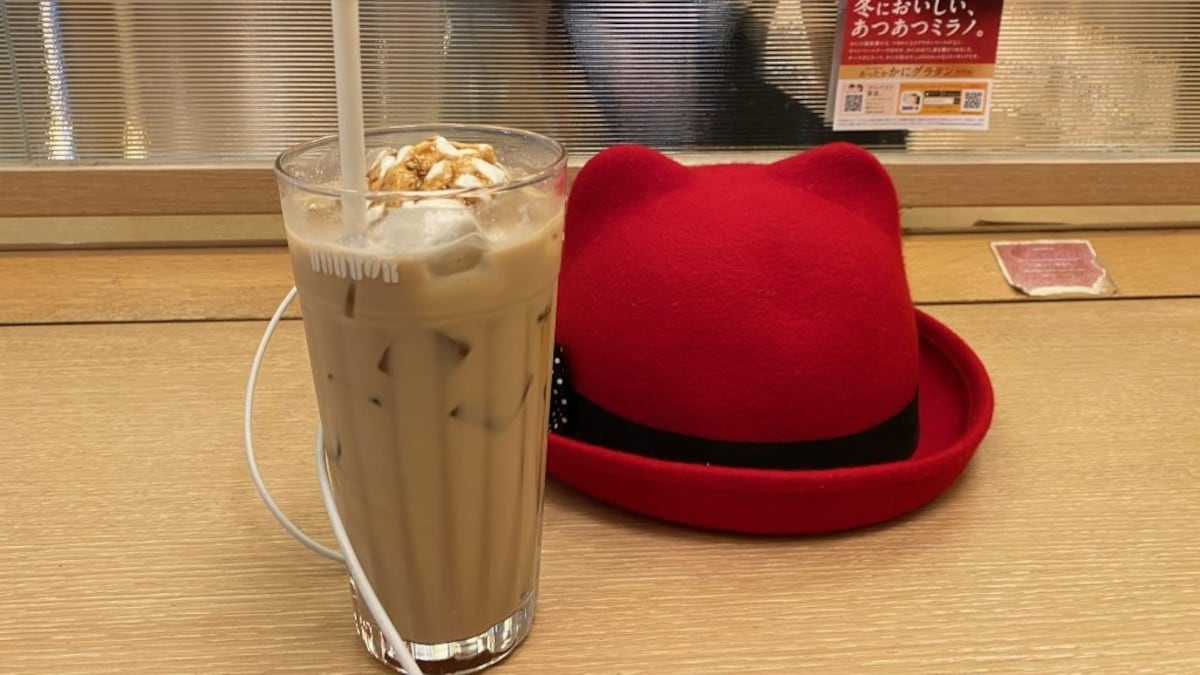
Tired, as the sun was setting, I headed back to Shinjuku. My phone was almost out of battery after all my picture taking and Googling. So, I stopped by the ever-reliable Doutor Coffee. While sipping a kinako (soybean powder) latte, I recharged my phone, and myself, waiting for the sun to set, so I could take my final photo of the day.
4. Midnight Occult Civil Servants x Kabukicho
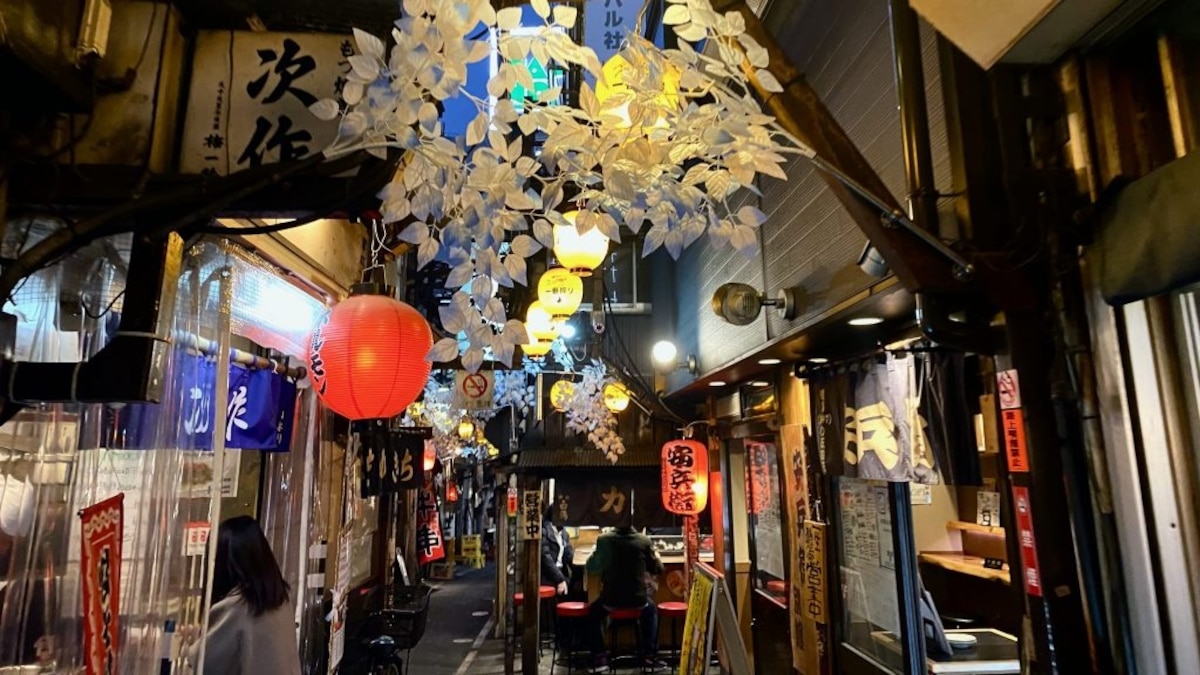
In Japan, twilight is also known as “omagatoki”, or the “hour of meeting evil spirits”. Legend says that as the sun sets, yokai are free to roam. Hence, many scenes in yokai-based anime are set at night, once the supernatural side of Tokyo has been revealed. This is the idea behind my next anime, Midnight Occult Civil Servants. It’s about the bureaucrats in charge of dealing with Shinjuku’s nocturnal, supernatural beings called “Anothers”. So, to really recreate the experience of the anime I needed to be in Shinjuku. At. Twilight.
Yokai aren’t the only beings to awaken at twilight, so are the inhabitants of Kabukicho, Tokyo’s famous nightlife district. The neon lights were flickering on, izakaya were just opening their doors, and hosts were all dolled up, headed to their respective clubs.
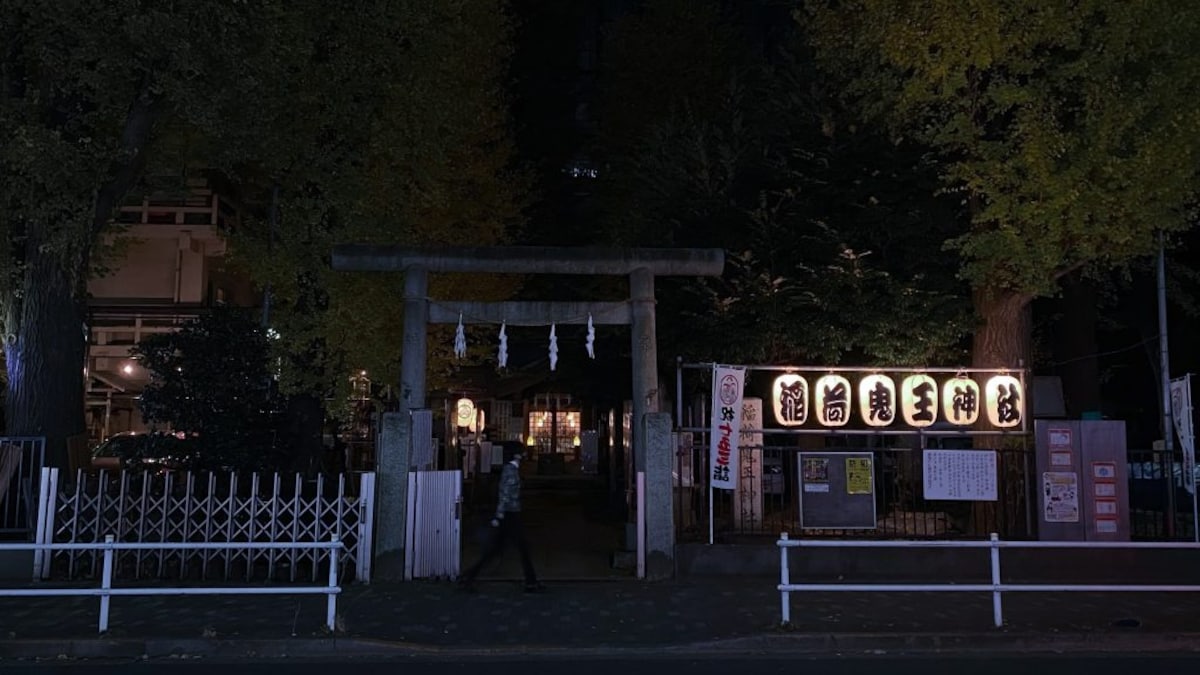
After meandering through Kabukicho’s seedy alleys on the way to my next destination, I finally arrived at Inari Kio Shrine. As the name suggests, the shrine is dedicated to Inari, god of rice, foxes, tea, sake and much more. However, there is another word in the shrine’s name “Kio”, which actually stands for the oni Kio Gongen. That’s right, Inari Kio is the only shrine in Japan to enshrine an oni (which means an ogre or demon).
The shrine appears in the fourth episode of Midnight Occult Civil Servants. The episode’s shot of the shrine was very accurate — I was able to get almost the same one from right across the street. The shrine is also central to the plot of the episode. The show portrays Kio Gongen as a party-loving oni, a perfect fit for the nightlife of Kabukicho. However, he reveals his dangerous side by kidnapping one of the characters. If you visit, don’t forget to pay your respects to the oni of the shrine… otherwise he might kidnap you too!
5. Spirited Away x Edo-Tokyo Museum
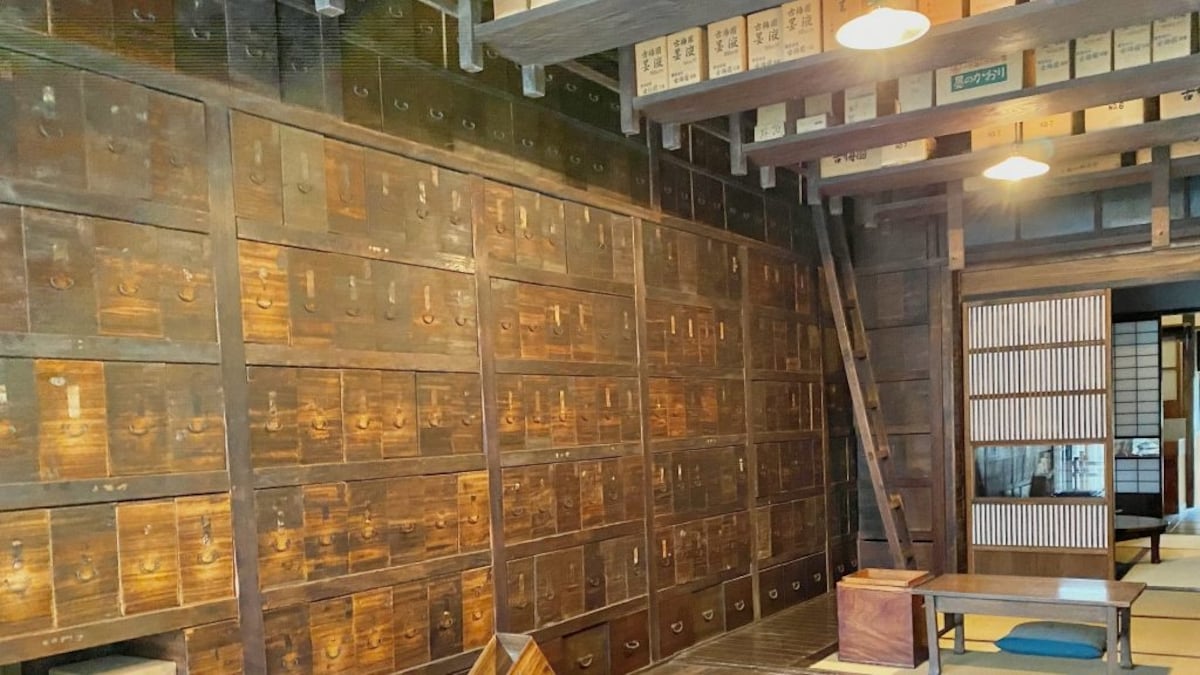
On the second day, I got up ready for a new adventure but still a bit groggy from all the walking the day before. My first stop: the Edo-Tokyo Museum. Instead of displaying art or artifacts, the Edo-Tokyo Museum displays entire buildings. The buildings have all been reconstructed in a large park, creating a very eclectic-looking village.
My main goal was to find the room that inspired Hayao Miyazaki when he designed the boiler room in Spirited Away. Unfortunately, I had no idea which of the 30 buildings it was in. I wandered through the park for a bit, enjoying the autumn leaves. Eventually, I stumbled across a collection of buildings that recreated a Meiji era (late 1800s) main street. And, I finally found my boiler room look-alike.
The room itself was a calligraphy shop. The boxes where Kamaji stores his herbs would have actually contained brushes and paper. It was impossible to get the exact same angle as in the film, because entry into the room was forbidden… but I tried my best to show the similarities.

(Image released copyright free by Studio Ghibli)
Spirited Away doesn’t specifically mention yokai, however the entire film is full of hidden references to them. Kamaji, who lives in the boiler room, is similar to two yokai: the tsuchigumo and the jorogumo, both of which appear as half-spider half-human creatures, just like him. It’s likely that Miyazaki was inspired by yokai legends for Kamaji, and many other characters.

(Image released copyright free by Studio Ghibli)
There were quite a few other locations that reminded me of the film. An old streetcar was strangely similar to the train Chihiro took in the film. The museum also featured a Meiji era bathhouse, which, while not exactly like the one in the film, still had some similarities. It was fascinating to see where Miyazaki drew his references from, and to see how he adapted them to his own work.
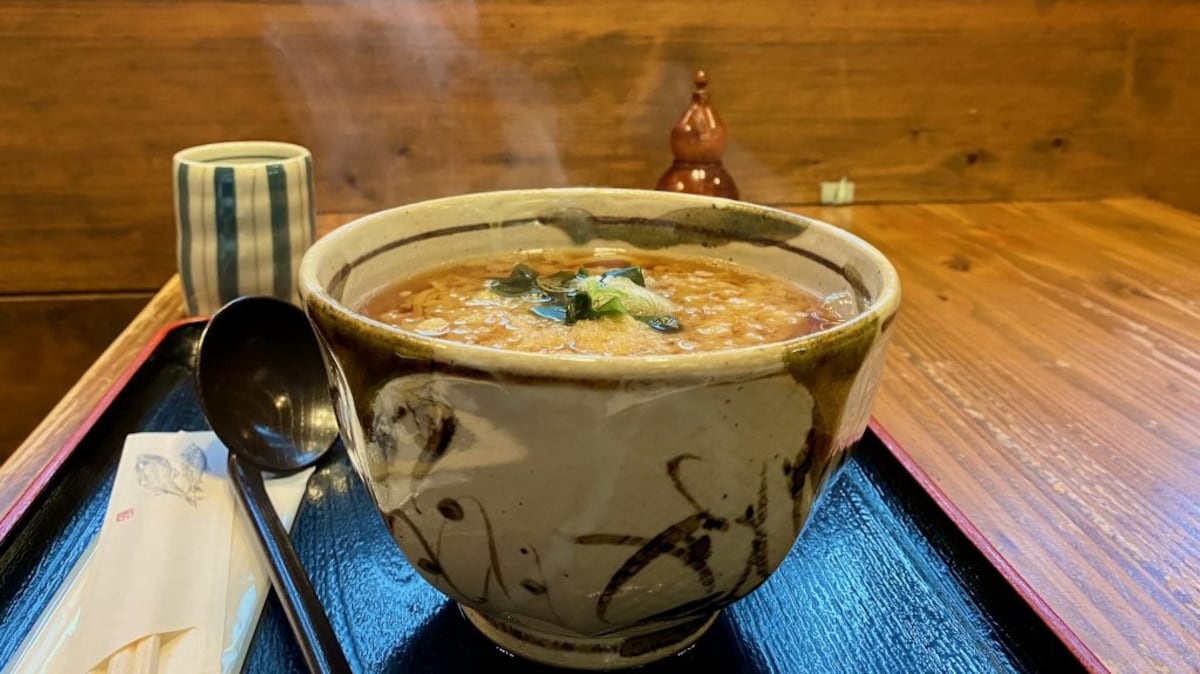
After getting my shot, I stopped for a late lunch at the restaurant along the old fashioned main street. Although the building was from the Meiji era, the udon shop inside was modern. I ordered tanuki udon (of course) a kind of udon filled with crispy tempura bits.
I asked the friendly women running the shop why this particular udon was named after tanuki (the Japanese racoon dog, an animal associated with the supernatural in Japan). They weren’t sure, but thought it might be because tanuki liked to eat the tempura flakes. A quick Google later revealed that because in olden days tempura batter bits were dark brown, the udon was dark like the coat of a tanuki.
Either way, it was delicious.
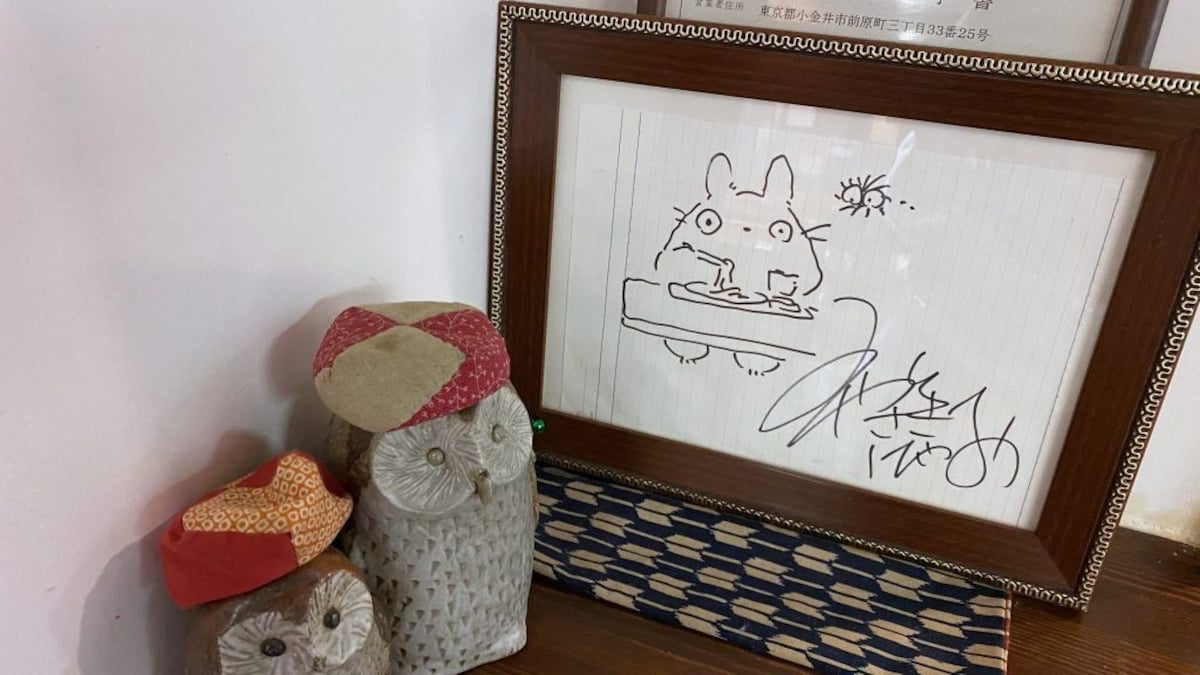
On my way out, I noticed a framed piece of notepaper with a signature and a sketch of Totoro. It turned out to be the autograph of Hayao Miyazaki, who had once eaten here as well! I felt as if I was following in the footsteps of the great director. I wonder what kind of udon he ate?
Continue reading on Tokyo Survival Channel: Finding Anime in Real Life: 10 Scenes, 10 Tokyo Locations, 3 Days!


